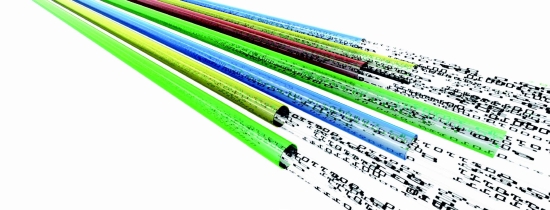 |
|||||
Accueil > Activités > Projets R&D >PARMA
PARMA
Partenaires du projet : Allinea Software, Bull, Caps, CEA, Dassault Aviation, Forschungszentrum Jülich GmbH, GNS, GWT Online, INDRA, Institut Telecom, Magma, Recom, Robotiker, Technische Universität Dresden, Università degli Studi di Parma, Universitat Autònoma de Barcelona (UAB), University of Stuttgart, University of Versailles Saint Quentin
Janvier 2011 ParMA: a major advance in High-Performance Computing (HPC) in Europe Launched in June 2007, and partly founded by the French Ministry for the Economy, Industry & Employment,ParMA (Parallel Programming for Multi-Cores Architectures) has enabled the development of an Open Source, multi-platform tool for optimizing parallel computer simulation applications. The tool, named UNITE, has contributed to the enhancement of bullx®, voted the world’s best supercomputer in 2009 by HPCwire magazine. These important innovations in parallel computing have immediately led to some tangible and spectacular results. Most notably, one of the German partners, RECOM Services, won a contract for their 3D-combustion simulation tool, used to optimize fossil-fueled power stations, which enables their customer to save €125,000 and some 16,000 tons of CO2 emissions annually, thanks to the increase of performance obtained using the ParMA tools. At a time when High-Performance Computing (HPC) is becoming an indisputable, strategic driver for innovation and competitiveness, the ParMA project has made a striking contribution to European industry by providing it with such high caliber hardware and software solutions. The aim of the ParMA project was to develop technologies that could fully exploit the multi-core architectures on which supercomputers are now based. Indeed, the advent of multi-core processors has enabled spectacular advances in computing power. Nonetheless, exploiting the true potential involves splitting up operations and distributing them between the various cores, something that requires the parallelization of applications. It’s not enough simply to re-write the code: the loading between the processing nodes must be rebalanced, and exchanges of data also have to be limited, as these then become the new limiting factor for performance. To this end you can tweak the various aspects of the logic (optimizing algorithms, using intelligent data management, setting up multiple cache levels…), and you can play around with physical aspects, notably limiting the relative ‘distance’ of tasks so as to minimize information flows. Finally, another issue is to make the whole system scalable in such a way that doubling the number of processors would effectively result in a doubling of program execution speed.
Janvier 2010 The EUREKA ITEA 2 software Cluster ParMA project has developed advanced technologies to exploit multicore architectures in semiconductor chips and so deliver substantial performance improvements for high-performance computing (HPC). ParMA technology has established new goals in modelling and simulation and enabled the development of innovative computer-intensive applications to accelerate research in many domains. It offers substantial improvements in applications such as virtual prototyping to reduce costs and accelerate design of new products. The results are already being exploited in applications such as: the Bullx HPC platform, one of the world’s best supercomputer; the UNITE development tool package which includes a full set of interoperable tools for advanced debugging and analysis; and RECOM simulation software for an automatic 3D simulator. The EUREKA project arose out of presentations on complementary targets in HPC by major French computer manufacturer Bull and the High Performance Computing Centre Stuttgart (HLRS) at the University of Stuttgart in Germany during the ITEA project outline days in spring 2006. The two organisations decided on a common project involving other partners from France, Germany, United Kingdom and Spain. A major problem was that existing parallel programming methods and tools were not able to cope with a high number of tasks or thread. The techniques available were diverse, could not be easily combined and only applied to main parallel programming techniques and on a limited number of platforms. Moreover, HPC applications developers had little experience of parallelisation in terms of how to restructure code and organise the data. And embedded software developers knew very little about multicore architectures. “The role of each partner was crystal clear from the beginning,” explains Jean-Marc Morel of project leader Bull – and ITEA founding company. “Getting or maintaining advanced technology in this domain is key for these actors and crucial to Europe as well for improving its competitiveness and independence. Indeed, a comprehensive, innovative, integrated and validated set of programming methods and tools to harness multi-core architecture is critical for European research as well as European industry – helping computing-intensive application developers to provide advanced modelling and simulation capabilities.”
Key results included the development of mature debugging and performance analysis tools and their integration in a single package that is freely available. ParMA also dramatically improved the performances of more than 12 industrial HPC applications. And the project resulted in superior HPC platforms.
A major outcome has been fast exploitation of results with the impact on the business of the partners already observed. The main one is customer satisfaction with the simulation software editors. An important contract has been signed for instance by RECOM because the optimisation realised with ParMA enables it to use a generic algorithm for an automatic 3D-combustion optimisation in a plant involving several billion possible combinations of parameters. A typical result has been to reduce the fuel consumption on one plant, saving some €125,000 a year and cutting annual CO2 emissions by 16,000 tonnes.
|
|
